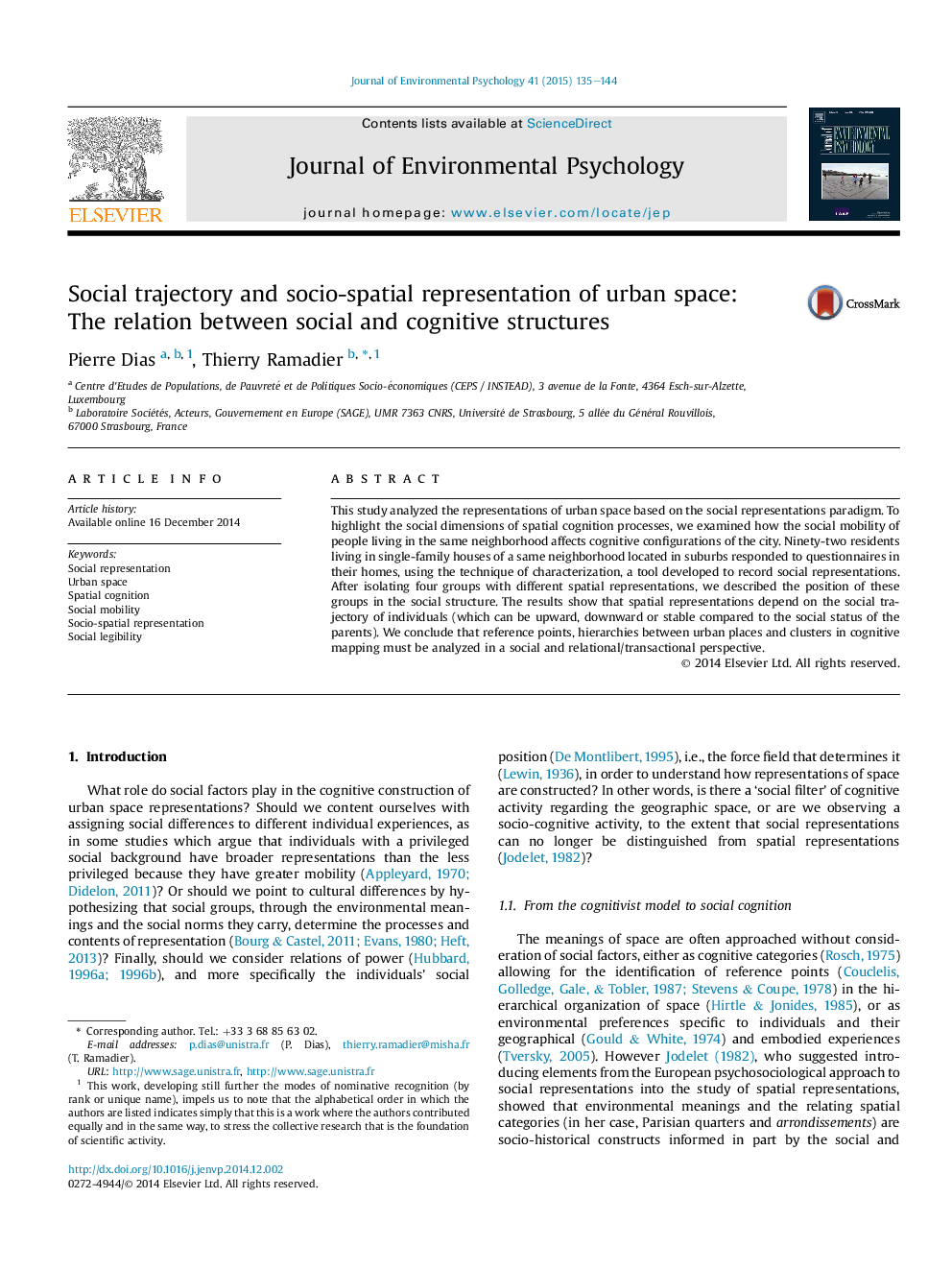| کد مقاله | کد نشریه | سال انتشار | مقاله انگلیسی | نسخه تمام متن |
|---|---|---|---|---|
| 7245936 | 1471753 | 2015 | 10 صفحه PDF | دانلود رایگان |
عنوان انگلیسی مقاله ISI
Social trajectory and socio-spatial representation of urban space: The relation between social and cognitive structures
ترجمه فارسی عنوان
مسیر اجتماعی و نمایندگی اجتماعی و فضایی فضای شهری: رابطه بین ساختارهای اجتماعی و شناختی
دانلود مقاله + سفارش ترجمه
دانلود مقاله ISI انگلیسی
رایگان برای ایرانیان
کلمات کلیدی
نمایندگی اجتماعی، فضای شهری، شناخت فضایی، تحرک اجتماعی، نمایندگی اجتماعی و فضایی، خوانایی اجتماعی،
ترجمه چکیده
در این مطالعه، بازنمایی فضاهای شهری بر اساس پارادایم نمایندگی اجتماعی مورد بررسی قرار گرفت. برای برجسته کردن ابعاد اجتماعی فرآیندهای شناخت فضایی، ما بررسی کردیم که چگونه تحرک اجتماعی افراد ساکن در یک همسایگی بر تنظیمات شناختی شهر اثر می گذارد. 90 نفر از ساکنان خانه های تک خانواده ای که یک محله در حومه واقع شده اند، به پرسشنامه ها در خانه های خود پاسخ دادند، با استفاده از تکنیک مشخصه سازی، یک ابزار توسعه یافته برای ثبت بازنمایی های اجتماعی است. پس از جدا شدن چهار گروه با نمایندگی های فضایی مختلف، موقعیت این گروه ها را در ساختار اجتماعی توصیف کردیم. نتایج نشان می دهد که بازنمایی های فضایی به مسیر اجتماعی افراد بستگی دارد (که می تواند به سمت بالا، پایین یا پایدار در مقایسه با وضعیت اجتماعی والدین باشد). ما نتیجه می گیریم که نقاط مرجع، سلسله مراتب بین مکان های شهری و خوشه ها در نقشه برداری شناختی باید در یک دیدگاه اجتماعی و ارتباطی / عملی مورد تجزیه و تحلیل قرار گیرد.
موضوعات مرتبط
علوم انسانی و اجتماعی
روانشناسی
روان شناسی کاربردی
چکیده انگلیسی
This study analyzed the representations of urban space based on the social representations paradigm. To highlight the social dimensions of spatial cognition processes, we examined how the social mobility of people living in the same neighborhood affects cognitive configurations of the city. Ninety-two residents living in single-family houses of a same neighborhood located in suburbs responded to questionnaires in their homes, using the technique of characterization, a tool developed to record social representations. After isolating four groups with different spatial representations, we described the position of these groups in the social structure. The results show that spatial representations depend on the social trajectory of individuals (which can be upward, downward or stable compared to the social status of the parents). We conclude that reference points, hierarchies between urban places and clusters in cognitive mapping must be analyzed in a social and relational/transactional perspective.
ناشر
Database: Elsevier - ScienceDirect (ساینس دایرکت)
Journal: Journal of Environmental Psychology - Volume 41, March 2015, Pages 135-144
Journal: Journal of Environmental Psychology - Volume 41, March 2015, Pages 135-144
نویسندگان
Pierre Dias, Thierry Ramadier,
